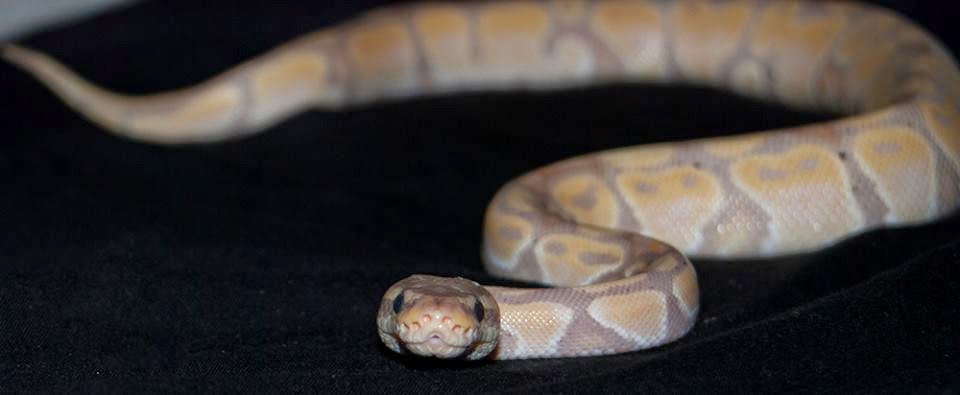Crested geckos (Correlophus ciliatus) are native to Southern Grand Terre, New Caledonia. They are semi aboreal and spend a lot of time in trees and shrubs. They are nocturnal and find hides to sleep in during the day usually on the ground.
 |
| Crested Gecko |
Diet
Crested geckos are omnivorous meaning they eat live food and vegetation. Their diet consists of small soft fruit (non citrus) and insects within striking distance. In captivity they are commonly fed: fresh soft fruits, baby food particularly banana, peach and apricot. As for live food crested geckos will eat crickets, small locusts and roaches. There is debate over whether it is safe to feed them mealworms as they can cause impaction. All live food should be dusted with calcium powder such as D3 and gut loaded, (this means feeding your insects healthy food so the gecko gets the best nutrition possible). Also ensure that insect feeders are the correct size and should be no bigger than the distance between the geckos nose and eye. I recommend buying Bug Grub to feed to insects and the odd fresh vegetation such as lettuce. There is also a special food available to feed crested geckos. All you need to do is mix the special food with water and place in a feeding dish.
A water dish should also be available at all times filled with fresh water. Crested geckos are also known to drink from dew in the wild, so spraying once daily will help to ensure that they are kept hydrated.
Housing
A glass enclosure is recommended for crested geckos as they live in cooler climates. They are also aboreal so a taller form of housing is better than a wider one. 18in x 18in x 24in is the minimum size of housing for a crested gecko.
Coco Husk is the ideal bedding for a crestie as it retains humidity without getting mouldy. As crested geckos are nocturnal they need to be provided with hides for during the day. Greenery is also a great addition for making more hiding spots and this helps the gecko to feel more secure.
 |
| Exo-Terra Enclosure |
Heating
Cresties enjoy lower temperatures compared to most other reptiles. Keeping them above 30 degrees Celsius will stress them and impact their health. The ideal temperature for a crested gecko is 24 degrees Celsius during the day with a night time drop to 13 degrees Celsius. This means that in some cases they will not require a heat source depending on your ambient temperature. However, a heat mat can be attached to the back or side of a terrarium. Always ensure that when you're using a heat mat that it is attached to a thermostat as this stops the mat from overheating. Also check temperatures regularly with a reliable thermometer.
Lighting
Similar to leopard geckos, crested geckos need to have a day and night time cycle. It is recommended that a 5% UVB light is used for 10-12 hours per day. This can be achieved by attaching a timer to the UVB light.
| Reptisun UVB Bulb |
Handling
Generally cresties are a good gecko to handle although they do like to jump. Don't panic if one minute one is in your hand and a second later jumps to your shoulder. Always handle gently and NEVER lift one by the tail. Crested geckos can drop their tail when they feel threatened and unlike leopard geckos, their tails will never grow back, resulting in 'frog butts'.
Humidity
Crested geckos require a moderate humidity. To check your humidity you can purchase a hygometer. Humidity should be 50%. Cresties should be provided with higher humidity (80-100%) for a few hours each day. This helps aid with the shedding process. This can be achieved by heavy misting with water. Although it is vital that humidity levels go back down to normal levels for the majority of the day. Prolonged high humidity can cause infections.
 |
| Water/Spray Bottle |
Co-habiting
Crested geckos can be co-habited although never two males as they will fight and could end up injuring one another. A male can be kept with a colony of females as long as the enclosure is large enough. A group of females can be housed together. Personally I would not recommend co-habiting as I don't want to risk cross-contamination.
Cleaning
As with all reptiles, keeping your housing clean and spot checking daily is important for your animals' health and well-being. Dead food should be removed on sight as should excrement. A deep clean once a month is also recommend. Remove all substrate and clean the enclosure with a reptile safe disinfectant. Also clean decor and hides at this time and water bowls when needed as sometimes reptiles will poo in their water bowls.
 |
| Disinfectant |
















